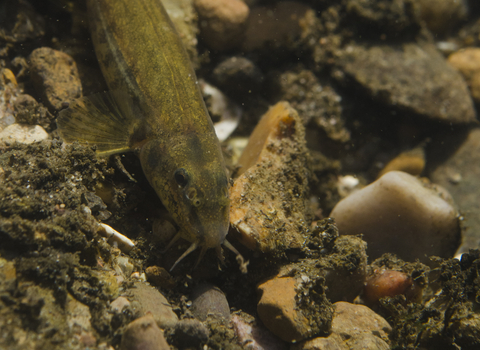
Stone Loach ©Jack Perks
Stone loach
The stone loach is notoriously hard to spot - not only is it mostly nocturnal, it is also well camouflaged and can partially bury itself in the riverbed. It uses its whisker-like barbels to find its prey.
Enw gwyddonol
Barbatula barbatulaPryd i'w gweld
January to DecemberGwybodaeth am rywogaethau
Categori
Ystadegau
Length: 6-10cmWeight: 3-6g
Average Lifespan: 3-5 years
Common.
